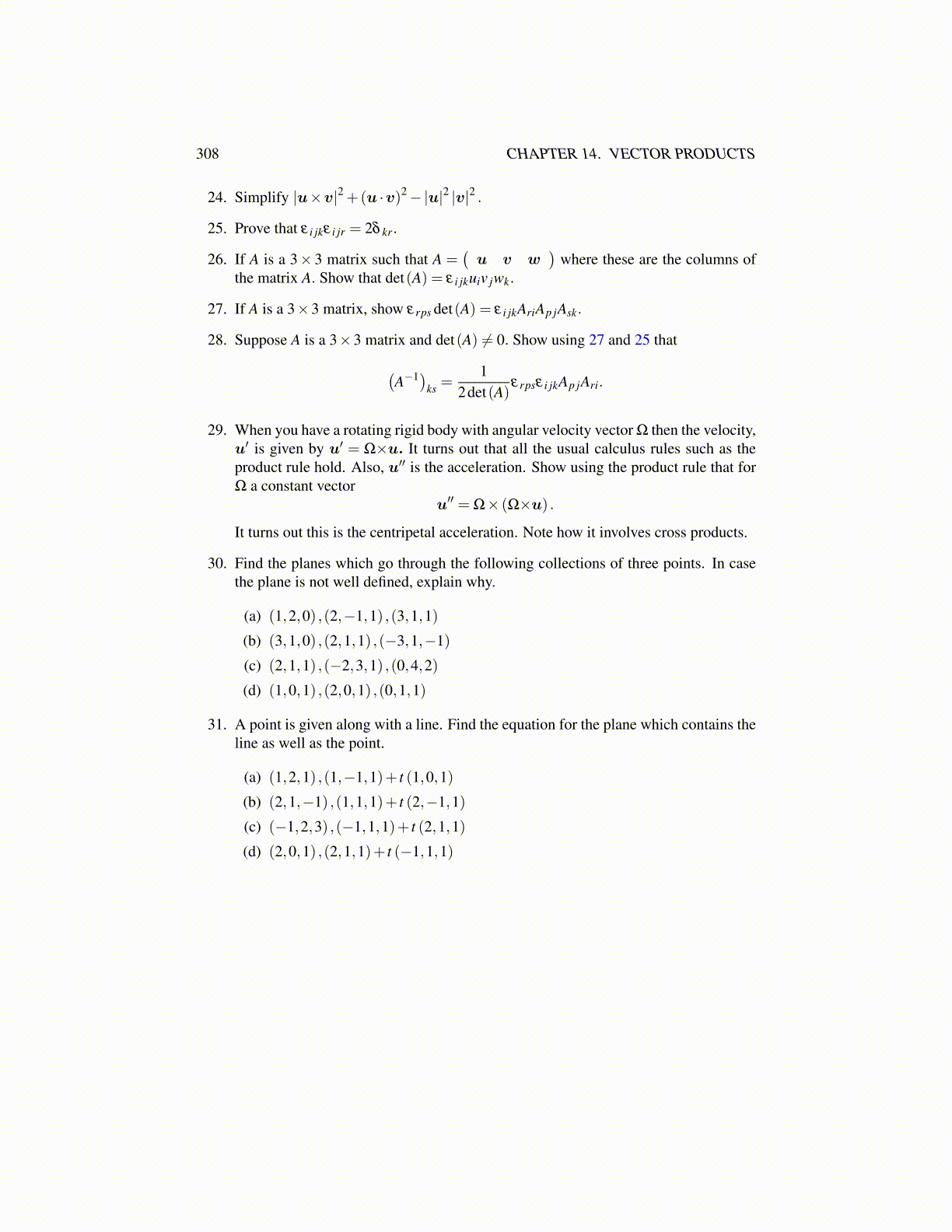
308 CHAPTER 14. VECTOR PRODUCTS
directly that the right thing happens with regards to the vectors i,j,k. Next verifythat the distributive law holds for the coordinate description of the cross product.This gives another way to approach the cross product. First define it in terms ofcoordinates and then get the geometric properties from this.
20. Discover a vector identity for u×(v×w) .
21. Discover a vector identity for (u×v) · (z×w) .
22. Discover a vector identity for (u×v)× (z×w) in terms of box products.
23. Simplify (u×v) · (v×w)× (w×z) .
24. Simplify |u×v|2 +(u ·v)2 −|u|2 |v|2 .
25. Prove that ε i jkε i jr = 2δ kr.
26. If A is a 3× 3 matrix such that A =(u v w
)where these are the columns of
the matrix A. Show that det(A) = ε i jkuiv jwk.
27. If A is a 3×3 matrix, show εrps det(A) = ε i jkAriAp jAsk.
28. Suppose A is a 3×3 matrix and det(A) ̸= 0. Show using 27 and 25 that
(A−1)
ks =1
2det(A)εrpsε i jkAp jAri.
29. When you have a rotating rigid body with angular velocity vector Ω then the velocity,u′ is given by u′ = Ω×u. It turns out that all the usual calculus rules such as theproduct rule hold. Also, u′′ is the acceleration. Show using the product rule that forΩ a constant vector
u′′ = Ω× (Ω×u) .
It turns out this is the centripetal acceleration. Note how it involves cross products.
30. Find the planes which go through the following collections of three points. In casethe plane is not well defined, explain why.
(a) (1,2,0) ,(2,−1,1) ,(3,1,1)
(b) (3,1,0) ,(2,1,1) ,(−3,1,−1)
(c) (2,1,1) ,(−2,3,1) ,(0,4,2)
(d) (1,0,1) ,(2,0,1) ,(0,1,1)
31. A point is given along with a line. Find the equation for the plane which contains theline as well as the point.
(a) (1,2,1) ,(1,−1,1)+ t (1,0,1)
(b) (2,1,−1) ,(1,1,1)+ t (2,−1,1)
(c) (−1,2,3) ,(−1,1,1)+ t (2,1,1)
(d) (2,0,1) ,(2,1,1)+ t (−1,1,1)